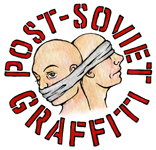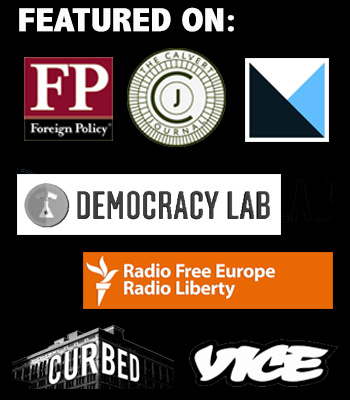In 2011, the International Cultural Carnival of Berlin bestowed the highest Culturefest honor onto Tűzraktér, Hungary’s largest, independent artist collective. The Mayor of Berlin shook hands with the institution’s proud representatives. The Hungarian Ambassador to Germany arrived for photographs and good natured support. Meanwhile in District VII, Hungarian officials illegally shut off Tűzraktér’s power and – to ensure that the job was completed – the state sent a district representative to peek inside the ruin-pub, now lit with thousands of tea lights.
“The government told us they wanted Hungarian artists,” explained Tűzraktér’s Director Balla Zoltán in a July 2011 interview. “And we said, that’s interesting, because art is not nationalist. [This tension] is based on a very old idea.”
Balla explained that this extended conflict is nothing new for Hungary’s diverse cultural community. As Balla toured us through a maze of darkened and state-padlocked back rooms he explained that Tűzraktér depends on private funding, which financially distances it from the state’s reach. The darkened room was filled with a photographic exhibit put together by Hungarian Roma artists. The collective, housed in a 100,000 square foot factory-turned-open-air pub, once offered gallery and studio space to hundreds of artists from around the world. The community, at its peak, hosted thousands of events each year – from circus performances to children’s concerts, film screenings to pro-Roma education nights. Tűzraktér publicized its events as free or low-cost for audiences of all ages. It had a bar, it had a café, it had internet connection and sleeping dogs and full-wall murals and fire dancers. In this intellectual meeting place, artists drank Club Maté, a symbol of independence and revolution.

Balla Showing the Tűzraktér’s Interior by Flashlight. July 2011. Budapest, Hungary. (Photo: Nicholas van Beek).
After a two year battle with Fidesz for existence, Tűzraktér finally shut its doors this winter. A space of freedom of expression for marginalized artists now lay in darkness. According to Balla, the institution always paid its rent on time and did not explicitly endorse political viewpoints. In the summer of 2010 it supported 380 artists, but by the time of our interview, that number dropped to 80. The government plans to replace the epic house of culture with its carbon-copy replica, albeit one that is state-sponsored. “What happened with Tűzraktér is what is happening with the rest of the country,” told Balla. “It’s like a litmus test. They use us to see where the power lies and where the independent limits lie. They say are you with us or are you with them and we say we’re not with you and we’re not with them.”
Even Banksy got involved:
Hungary is rapidly deteriorating. Just last week, Fidesz mysteriously removed Jews and gays from cultural leadership positions and replaced them with pro-state, openly anti-semitic stooges. By allocating funds for Hungarian national film companies, investors elbowed out any remaining foreign film industry last year. The government recently passed a law recognizing 14 religious groups as official and therefore legitimate. Of course, Islamic, Buddhist, and Hindu congregations were not listed, and therefore not recognized for tax purposes, funding opportunities, and for frank reasons of social and human equality.
Last fall, Fidesz redesigned Hungary’s welfare program. After three months, a welfare recipient loses their stipend unless they enroll to clear fields for less than $250 a month in a countryside labour-camp. This program does not provide participants with enough money on which to live, nor does it give them many future prospects. Many welfare participants are from Hungary’s Roma communities, a factor which makes one wonder about Fidesz’s intentions.

English graffiti found in a IX District Roma neighbourhood. July 2011. Budapest, Hungary. (Photo: Alexis Zimberg).
“Instead of the citizen going after his or her own problem, it’s the state handling the citizen’s problem.” – Kovacs Zoltan.
We met with the former Hungarian Ambassador to neighbouring Slovakia for an interview on a rainy Sunday afternoon. Around the time that Fidesz isolated him from his government position last year, Central European University mysteriously dropped him from their political science faculty. Unemployed and overqualified, he now organizes 30,000+ person protests in Budapest. At the time of our interview, he explained that policemen, fire fighters, and other city workers were now joining the fight again the extreme right-wing. After Fidesz significantly cut budgets for these city services, the institutions themselves became responsible for raising their own funds and salaries. To make up for unsurmountable deficits, the police now charge nearly $200 for an illegal right turn and $300 for speeding even five kilometres over (says my cousin, whose car now beeps whenever she passes the speed limit. “I just cannot take the risk of getting a $300 ticket in this economy,” she told me as we drove out of Pest one summer evening). To boot, Fidesz called these city workers out of retirement – threatening to withhold their pensions if they should decline.

Tuzrakter Artist Mural Along the Suburban Rail. July 2011. Budapest, Hungary. (Photo: Alexis Zimberg).
Hungary is scary because, despite what the western media might claim, Orban Viktor is not the only problem. He is a mouthpiece for a greater dominant ideology. Even Kovacs Zoltán (writer of the March 2011 media law and strong supporter of the “Roma Solution,” which he nauseatingly outlined to a room full of Ashkenazic Jews in Washington D.C. in March 2011) – is only a representative. A striking percentage of the Hungarian people – including a surprisingly large number of otherwise disenchanted young adults – seem to support the Hungarian government’s actions. It will take more than sanctions and hand slapping to stop the momentum of new Hungarian fascism; the country needs an overhaul of its economy, its human rights prerogatives, and its über-nationalist rhetoric.



![[VICE] The Silent Protest of Post-Soviet Graffiti](http://postsovietgraffiti.com/wp-content/uploads/2016/01/vice-1-140x90.jpg)






Very sad!
I’ll be uploading most of the mag onilne, but not the trains which is probably the part you want to see. I’m sending some copies to contributors to the latest issue and if there’s a graff store in Belgium you could help me out with I’ll send them some copies too.CheersTeam Wordplay
I’m impreessd by your writing. Are you a professional or just very knowledgeable?
Truely enjoying learning about all the details of your travels!